
How To Write The Ultimate ECommerce Business Plan In 2025 [Beginner-Friendly]
In the past few years, eCommerce has grown beyond any expectation. Specifically, statistics have shown that the eCommerce industry is growing about 23% year-over-year.
This is due to the convenience that online purchasing offers, simplifying the shopping experience and giving you the opportunity to run your own business through your website.
While this may sound easy, you should know that running a profitable business requires a thorough eCommerce business plan. Today, we’ll help you write yours by looking at:
- what an online business plan is
- why you need one
- how to write yours in simple steps
Without further ado, let’s begin!
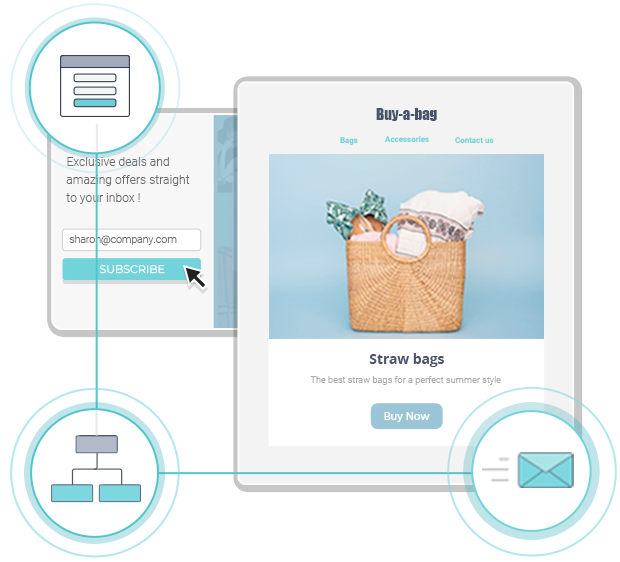
The easiest and most affordable email marketing and newsletter software!
What Is An eCommerce Business Plan?
In short, it is a roadmap or a “handbook” that includes all the core activities of a company, including your goals, business model, products/services, marketing and sales strategies, and more.
The purpose of this plan is to map all the processes your business will need to succeed and make sure that you are on track to achieve your objectives. However, this isn’t the only reason why you have to craft a new business plan for your eCommerce store.
Why You Need One For Your Online Store
Apart from setting measurable goals and getting a better understanding of your company, a strategic plan will allow you to:
- Discover your ideal target market: Knowing your audience is the best way to make your business succeed. So do market research and try to discover the ideal customer persona to sell to.
- Find the necessary resources: Financial resources are probably the most important aspect of your business. Write down your main sources of funding and your alternatives (loans, investments, etc.)
- Run an effective competitor analysis: Spend time researching your competitors’ products, strategies, and run a SWOT analysis to determine their strongest and weakest points.
- Hire the right people: An eCommerce business needs the right people to function properly. By determining who these key people are, you can fill potential gaps in your business operations.
- Spot potential investors: Use your eCommerce business plan to take down alternative forms of funding, approach investors, and create partnerships.
Your eCommerce business strategy may change depending on a variety of factors, like the shift in demand. A clear business plan is the best tool you can use to rethink your tactics, adjust your goals, and get your business back on track.
Also, if things don’t go your way, you should take immediate action! Time is indeed money in the eCommerce industry and you don’t want to waste any of it.
Who Needs It?
A business plan is a necessary tool for every business owner, startup, online educator, SaaS, online retailer, and so on. If you are new to the eCommerce industry, a plan like this will help you set clear goals and structure your company.
Remember, knowledge is indeed power. So learning as much as possible about your business is key to making it successful. Before you start creating your business plan for your eCommerce company, ask yourself the following questions:
- What is my business model?
- Who is my ideal customer?
- Will my product solve my customers’ pain points?
Let’s answer them below.
What is my business model: digital, physical, or hybrid?
Ecommerce isn’t only about selling digital products. It can also be a service, online courses, subscriptions, and so on. Before you create your business plan, make sure that you have decided which model you will adopt.
- Digital: Selling digital products is an attractive option as it has lower overhead expenses and requires no inventory. Ecommerce businesses like these include SaaS and subscription services such as Moosend, Udemy, etc.
- Physical: If your eCommerce store sells physical goods, you need to think about the costs, inventory space, and management.
- Hybrid: The hybrid model combines the previous two. This means selling a digital product (i.e., an online course) and giving your potential customers the option to purchase extra material like physical books, etc.
Of course, another thing you need to consider is the type of business you are going to run. More specifically, you can be a business-to-business (B2B), a business-to-consumer (B2C) company, or a direct-to-consumer business (DTC). As their names suggest, the focus is shifted based on who your end customer is or how you distribute the product.
Who is my ideal customer?
To discover your target customers, you need to find the right demographic to which your product will appeal. If, for example, you want to sell pre-school toys, then you have to target parents with pre-school children. Then, think about the benefits your product will offer them and how it will be better than your competitors.
Of course, the ideal customer is going to be one who is disappointed by the options already available in the market and in need of a more efficient solution. When these boxes check out, you will have found the right people to sell your product.
Will my product solve my customers’ pain points?
Another great question that you need to ask yourself is whether your product will solve your potential customer’s pain points. As mentioned above, you need to find flaws in your competitors’ products and use them to your advantage to attract your audience.
A great product that offers an amazing customer experience and solves their pain points will perform outstandingly. Just make sure that it is exactly what you promise because overpromising and underdelivering will harm your eCommerce business image.
Now that you are aware of the what, why, and who, let’s move on to the how-to part.
How To Write An Ecommerce Business Plan In 8 Simple Steps
After answering these questions, it’s time to see the components of a successful business plan and how to write yours, starting with the executive summary.
1. Consider Your Executive Summary
An executive summary is usually a single-page outline of your business concept, highlighting all the key elements of your operations. It needs to be short and in-depth enough to make whoever reads it interested in what is to follow.
While this is the first thing you need to keep in mind, writing an executive summary comes last. This is because after writing your business plan, you’ll be able to craft an informative summary to cover everything in a succinct manner.
Now, to nail your executive summary, you add the following:
- Introduction: Start with an interesting point to give your reader an idea of what they’ll find in your eCommerce business executive summary. Be short and informative.
- Organizational Description: Provide your company’s name, mission, and target audience. Also, give a description of your product and say how it solves your customers’ pain points.
- Competitive Analysis: Add your strengths and advantages compared to your competitors and say why your product will be a better fit for your target market.
- Management and Operations: Include a short description of your management team and how your business operates, what is your drive and what practices and tactics you implemented.
- Marketing Your Product: Describe the process of increasing brand awareness, the channels used, and provide data to show how they worked.
- Financial Plan: Insert your funding sources (if you’re looking for potential investors), your budget, startup costs, and any other financial projections you might have.
- Conclusion: Summarize your outline in a few sentences.
Overall, a good eCommerce executive summary needs to be informative and intriguing enough for your reader.
Tip: Make your outline as clear and concise as possible, avoiding cliche language and unnecessary information. It needs to be as short as the good old “elevator pitch.”
Executive Summary Template
Writing an executive summary isn’t difficult. So, after writing your business plan, you can create a new document using Google Docs and add the necessary information.
As you can see, we created a simple one-page example to show you what your summary will look like:
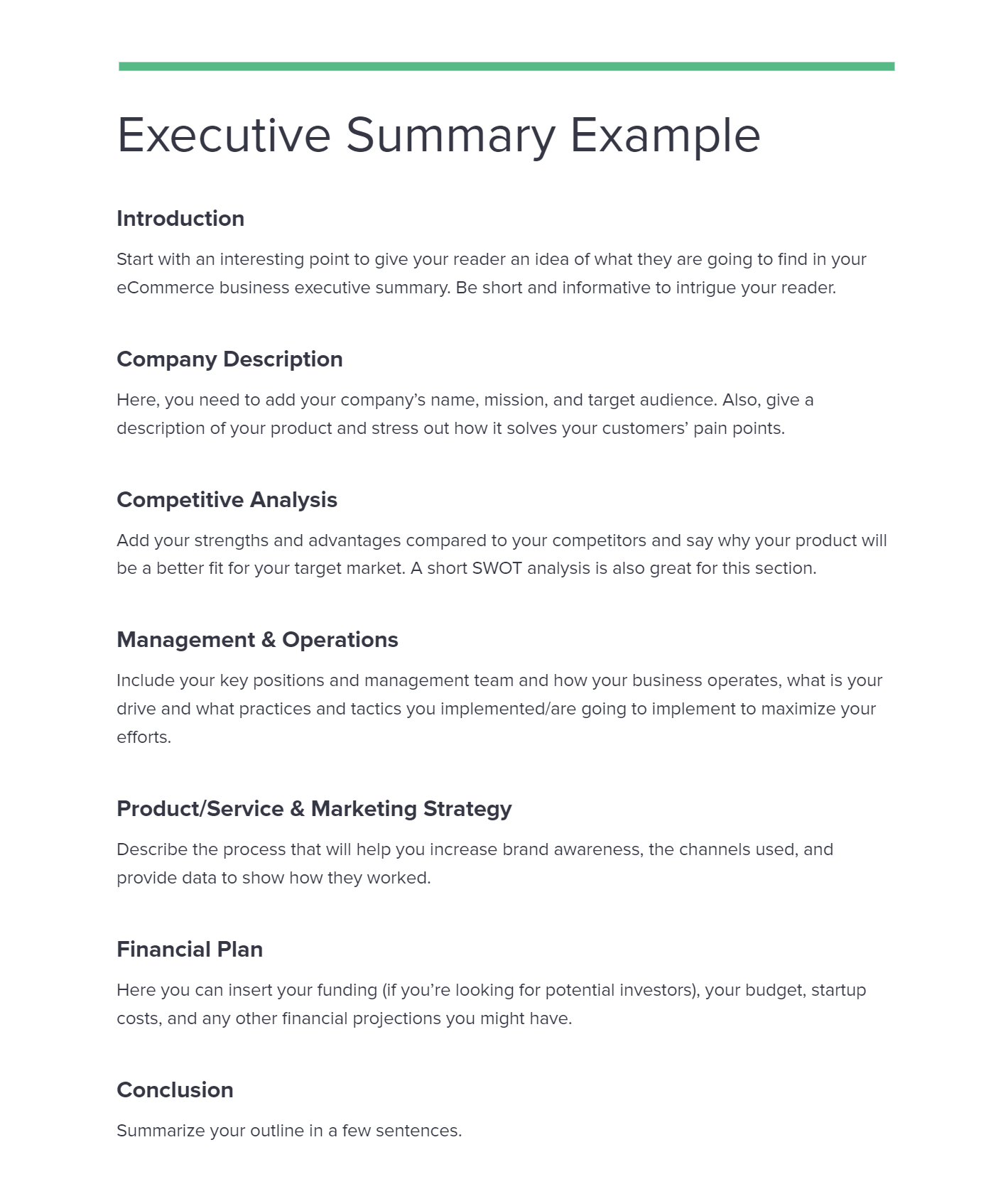
2. Start With Your Brand Overview
Now this section of your eCommerce business plan is dedicated to your business overview.
After reading this section, your reader needs to know who you are and what your mission is. A great company description should include your:
Brand Name & Domain
Choose a name that represents your brand. It can be simple, creative, and unique. Apart from that, don’t forget to add your domain name.
Tip: A good brand name should be closely related to your product or service, be memorable, distinct, and pique your potential customer’s interest. For instance, Nike’s evocative brand name has become synonymous with improving your life through exercise. Plus, it is easy to remember and carries positive connotations.
Business Structure
When your start your eCommerce business, you need to select the legal structure you are going to follow. Be careful, though, as the type of business entity you establish affects the income tax form you have to submit.
When you decide, you need to state whether your business is a sole proprietorship, a partnership, a limited liability company (LLC), or a corporation. This way, your potential investors will have a better idea of what you plan to do.
Tip: LLC is a great business structure for eCommerce stores as they have fewer potential risks and offer more tax options.
Brand Mission & Vision
When you build a brand, you need to have a clear business mission statement. This is essential as it will show your target audience your purpose and your objectives.
Moreover, as there are more businesses out there selling products similar to yours, you need to show your potential customers how you plan to serve them and what impact your company will have on their lives, the environment, etc.
Tip: In this section of your eCommerce business plan show your audience what you do, who you are, and why you do what you do. Also, keep your brand mission statement short (not over 100 words) and showcase your core values.
Here’s an example by Patagonia:
“Build the best product, cause no unnecessary harm, use business to inspire and implement solutions to the environmental crisis.”
Value Proposition
As the name suggests, here you need to give your reader a summary of why your potential customers will choose your product over your competitors.
Show the value of your brand and the benefit your target audience will gain. What’s more, a great value proposition needs to demonstrate how the benefits and features will contribute to a pristine customer experience.
Tip: A great way to start writing your online store value proposition is to use a value proposition canvas like the one seen below:
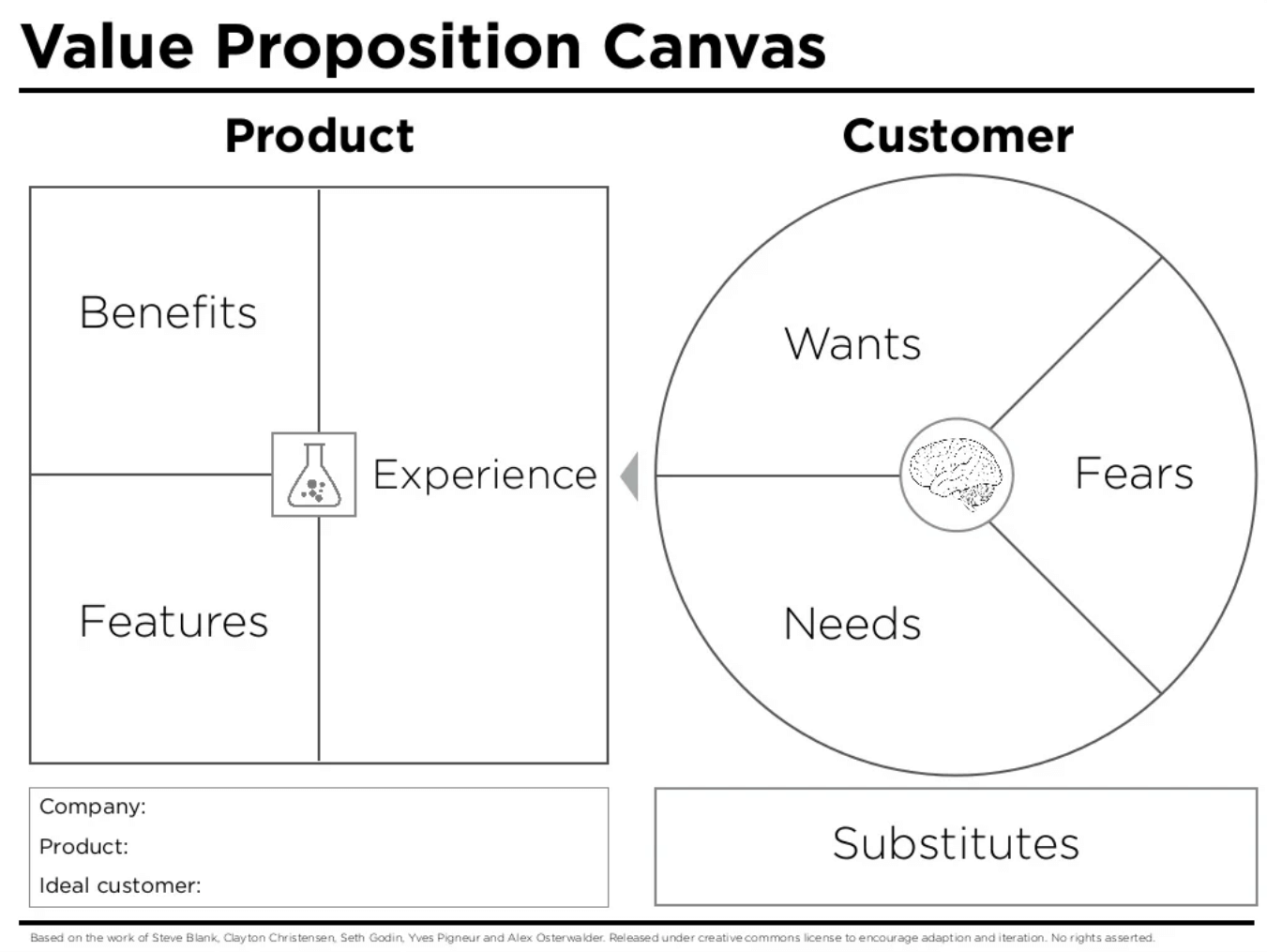
Business Background
Here you have to tell your reader how you qualify to pursue your new eCommerce venture. Give them a look into your personal history, your experience in the field, and the knowledge you possess to make it work.
Tip: If you’re just getting started, make sure to emphasize your skills and educational background to convince the reader that you have what it takes to tackle the industry. Also, you can say how you will deal with your lack of experience and what steps you’ll take to make it work in your favor.
Moreover, try to keep your brand overview short and to the point. In a nutshell, your reader needs to understand what your plan is, whether your goals are measurable, and what differentiates your product from the rest.
3. Add Your Team Members & Key Positions
The success of your online business depends on the people you are working with. Of course, you can run a business yourself. However, if you want to scale it, you need a team of experienced people to help you out.
In this section, include your team members and/or the people you’ll need as you move forward. To build an efficient eCommerce team from scratch, you need to consider a few important things. Determine your staffing needs first and then decide whether you’re going to build an in-house team or outsource the work.
Tip: Outsourcing may be a clever way to get the job done while saving money. Nevertheless, an in-house team will give you more control over your projects and have potentially more qualitative results.
Key Positions For An Ecommerce Store
When you identify the teams you need, you have to add all the key positions in your business plan, giving a short description of what they do and their salaries.
Below, you can see some of the key members you will need to build an eCommerce team for your business.
- CEO
- Director of eCommerce
- Web Developers
- Finance and Accounting Managers
- Customer Service Agents
- Digital Marketing Manager
- Logistics Manager
- Digital Operations Manager
After you write down your personnel information, it’s time to perform an analysis of your target market.
4. Provide A Market Analysis
Another essential part of your eCommerce business plan is your market analysis. This will allow you to determine the number of people who might be interested in your product or service.
To make a successful market analysis for your online store, you will need to:
- assess the existing volume of products/services
- determine the value/quality of them
- study your competitors (competitive analysis)
- find out who your potential customers are
- uncover buying patterns and customer behaviors
When you do all of the above, you need to write them down to your plan. Whether your readers are interested in your analysis or not, include it in your document as it will help you create more targeted products/services, reduce potential risks, and discover hidden trends.
Lastly, it will help you create more accurate financial projections for your financial plan section later on.
How To Perform A SWOT Analysis
A Strengths, Weaknesses, Opportunities, and Threats (SWOT) analysis is probably the easiest way to identify your pros and cons for more efficient strategic planning.
This assessment tool will help you support your business plan and show your potential investors what skills will help you succeed. Below, you will find a visual representation of a SWOT analysis.
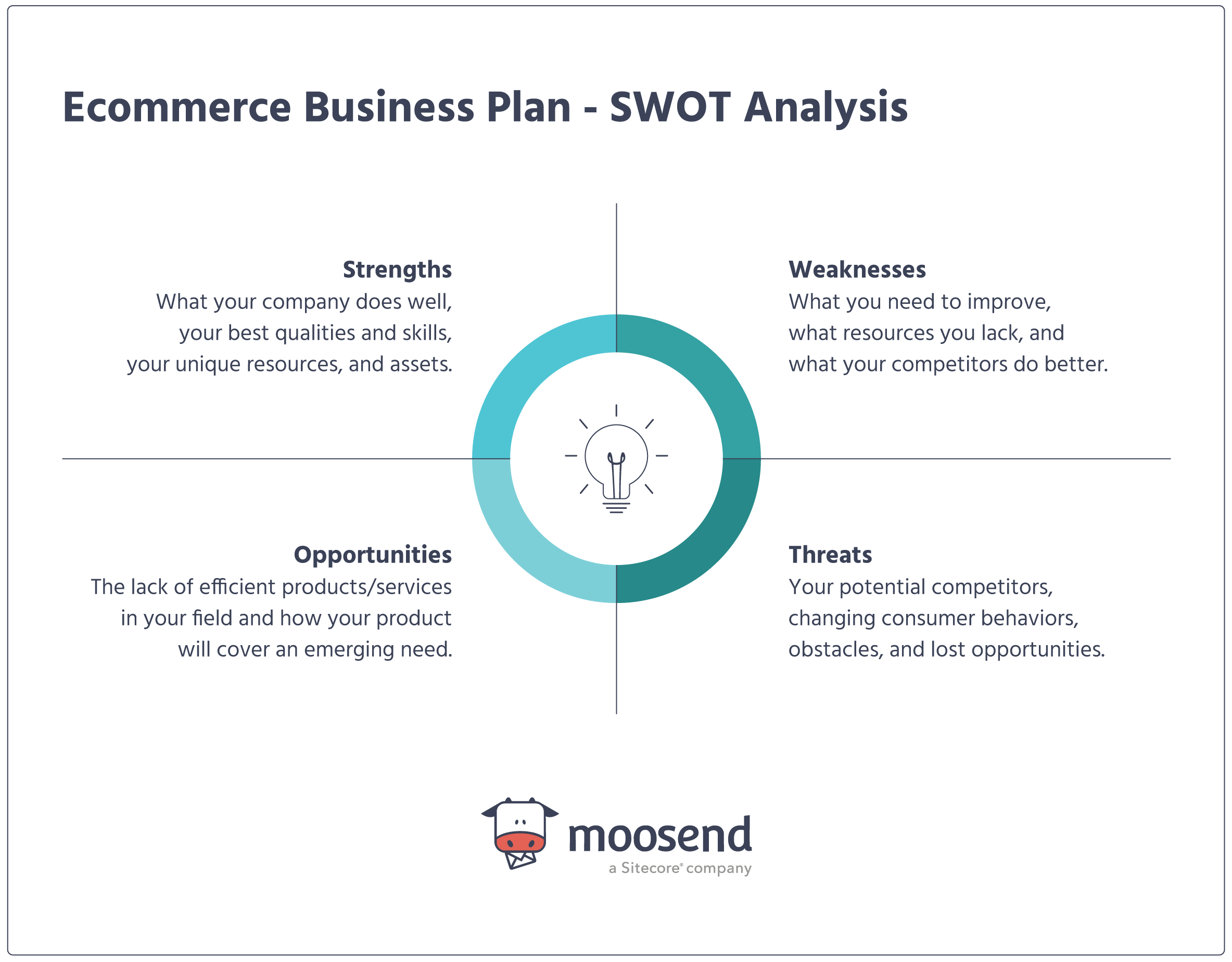
To make it work, you need to answer the following questions:
Strengths
- What are your skills?
- Which is your unique product/service angle?
- What resources and assets do you have?
Weaknesses
- What do you lack?
- Which aspects need to be improved?
- What do your competitors do better than you?
Opportunities
- What is missing from the market?
- How to streamline your operations?
- What other customer segments/demographics need targeting?
Threats
- How can the market change?
- How can consumer trends influence your business?
- In what ways will your competitors respond?
Ecommerce SWOT Analysis Example
According to a case study, performing a SWOT analysis helped an eCommerce company increase its sales by 44%.
While simple, identifying your core strengths and weaknesses will allow you to optimize your strategies in the long term. Also, showing it to your readers/investors will boost your credibility and transparency.
Remember, having a viable solution is better than overpromising and underdelivering. Below, you can see what an eCommerce SWOT analysis looks like:
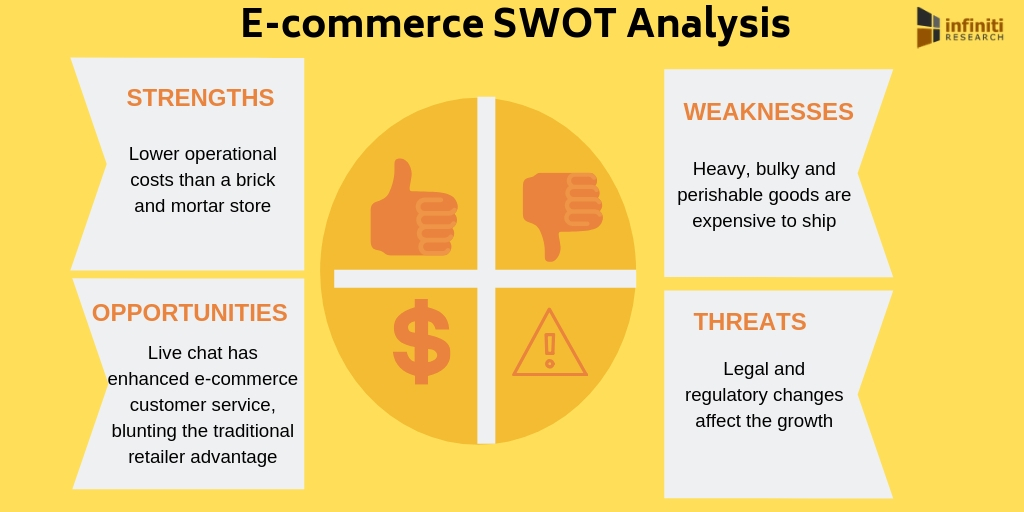
How To Run A Competitive Analysis
Apart from your SWOT analysis, you also need to perform and add a competitive overview to your eCommerce business plan.
In a nutshell, a competitive analysis will allow you to assess your competitors by discovering their strengths and weaknesses. Studying the other key players in your niche is essential to understand how they operate, what they do well, and what they lack.
To perform such an analysis, you need to follow a few steps:
- Identify your competition: there are two types to consider, direct competitors who have the same product and target the same audience, and indirect competitors who have similar products but a different target audience. You can find your competitors by making a simple web search.
- Study their online presence: evaluate their website/eCommerce store. Take into account how user-friendly it is and what experiences it offers to customers.
- Analyze customer reviews: check what their buyers have to say about their products/services. This will help you understand what makes them unique, identify gaps in their strategies, and uncover their strengths and weaknesses.
If you want to make your competitive analysis even more efficient, consider using some online research tools to streamline the process.
Software like SEMrush, Sprout Social, and Ahrefs are perfect for simplifying the process. When you find their strengths and weaknesses, you can add your competitive overview to your business plan.
5. Describe Your Products/Services
Whether you are a small business owner or an entrepreneur, you need to showcase your product idea as clearly as possible to intrigue your readers/potential investors.
Here, consider the number of products your company will sell. Will you focus on a single item or more? Then, write an informative product/service description by following a few simple steps:
- Describe the features: start with the name of your product/service and provide a summary of its features in layman’s terms.
- Highlight the benefits: add the advantages and what your potential customers will gain by using it.
- Stress out the need for your product/service: let your readers know why your business idea is needed, offering a description of what pain points it solves.
- Special points: If your product is innovative, make sure to add it to this section of your business plan to excite your reader.
Tip: Be clear and concise, avoiding getting too technical. Also, if you have to include numerous pieces of information make sure to use bullet points to make it easier to read.
Here’s a very simple product description example:

How To Select A Good Product To Sell
Finding a great product will determine the survival of your new business. Below, we’ll see a few tips to help you discover profitable products for your new venture.
In a nutshell, you want to find something that potential customers will want to buy. That’s why the first thing you can do is search for emerging product trends and capitalize on them as early as possible. While this is basically the best way to start, you can also:
- Check customer reviews for existing products and create something better.
- Come up with something innovative to wow your potential customers.
- Use keyword research to find gaps in the market.
Apart from checking consumer product trends, you can also search for profitable product ideas on social media networks, wholesale marketplaces like Alibaba, forums, customer surveys, and so on.
Whatever you choose, make sure to find something that aligns with your goals. This way you will have better chances of succeeding while doing something you love.
With your product/service section complete, you can now start writing the Marketing Plan section of your eCommerce business plan. Let’s see more below.
6. Devise Your Marketing Plan
Your marketing and sales plan is an equally important part you need to include in your document. Here, you have to tell your readers how you’ll approach your potential customers and which channels you’ll use.
Of course, to make your eCommerce marketing efforts efficient, you should write it by keeping your ideal customer in mind. To nail it, you can use the 7 P’s of marketing to provide your reader with an adequate strategic marketing analysis.
Below, you can see those P’s and what you need to include in each section:
- Product: Describe your product/service in short.
- Price: Estimate how much it will cost and why you decided on this number.
- Promotion: Include the ways that you will increase brand awareness.
- Place: Mention the place where customers will find your products (physical store, online, or both.)
- Packaging: Add how your product/service will appear to your customers.
- Positioning: How you want your audience to see you and what feelings they will have towards you.
- People: Find the right people to run your business and help you market and sell your products.
An effective marketing strategy plan will help you set the right KPIs and market your product/service to the right audience. After you complete this section, you can also add the channels you will use to approach your target customers.
Best Marketing Channels For eCommerce
Promoting your online store is a piece of cake as digital marketing will offer you all the right tools to simplify the process. Below, you can find the best marketing channels for your eCommerce business:
Email marketing
Email is one of the most cost-effective channels you can leverage with an ROI of $42 for every $1 you invest in it. As a channel, email allows you to reach a big audience regardless of time and space. Moreover, it lets you nurture your potential customers with personalized messages and targeted offers.
For example, you can leverage the power of segmentation and marketing automation to craft emails tailored to your target audience. This will boost your open rates and, ultimately, your conversions.
If you want to take advantage of this valuable digital marketing asset, you need an advanced email marketing automation platform. You can create your email campaigns with Moosend’s builder by trying it out for free.
SEO optimization
Search Engine Optimization (SEO) is an important practice to help your online store rank high in search engines. To do that, use relevant keywords in your product and website copy to help search engines rank you for these terms.
Creating SEO-friendly descriptions is a simple yet effective way to increase your traffic and conversions.
Content marketing
Along with SEO, your content marketing efforts can also help your online store drive more traffic to specific pages. You can create a variety of types like videos and blog posts to engage your target audience and show them the real value of your product/service.
Social media & Influencer marketing
Using your social media accounts is a great way to increase your brand awareness. Plus, it’s free if you want to use it organically. All you need to do is create beautiful posts showcasing your products and you are ready to roll.
Now, if you want to take advantage of the full power of social media, you can also leverage paid advertising to promote specific products more easily at a cost.
Moreover, you can also collaborate with influencers to build credibility and give your eCommerce business a boost.
Affiliate marketing
Last but not least, you can always create an affiliate marketing program to promote your business through your partners. Keep in mind that here you will collaborate with people who will sell your products in exchange for a commission.
7. Set Up Your Logistics and Operations Plan
In this section of your eCommerce plan, you have to provide an overview of your logistics and operations. Here, your reader needs to know how you will materialize your business idea.
Although you don’t need to add a lot of details, make sure to include the means that will help your venture, including your equipment and facilities. Here’s what you have to include in your logistics and operations plan to cover your readers or potential investors.
Suppliers
Mention the source of your raw materials and what you need to create your products. To find the right supply chain, make sure that the suppliers are knowledgeable about the materials, favor quality, show interest in evolving their resources, and offer continuous support.
Production
Before you complete this section, ensure that you have selected the right business model. Let’s see your options here:
- Dropshipping: This has a low-cost start and it’s ideal for those who want to streamline their sales process fast. However, you will come across high competition and difficulty in making a high profit.
- Makers: Being a maker offers you control over your brand and prices while giving you low startup costs. Nevertheless, you can have scalability issues and spend too much time crafting.
- Manufacturers: Again, you have control over your price, brand, and quality. You will come across higher startup costs, though, and you might face issues with manufacturers.
- Wholesale: This option will allow you to sell established products to your target audience, cutting down the time customers need to get familiar with them. However, you will have no control over the price and face inventory management issues.
- Digital only: Selling digital goods will allow you to scale faster. Nevertheless, you need to be prepared for the high competition and restrictive commerce policies.
- Direct-to-consumer: Lastly, DTC is a clever way to build solid customer relationships and personalize their experience. Also, this method allows you to cut warehouse expenses and, thus, have higher profits. However, since the distribution is direct, you will have to invest money and time to make sure your operations run smoothly.
Facilities
This entails the physical space that will house your team and technical equipment. If you choose to have a retail space, add the location and a brief description of it.
Inventory
Based on your business model, add the quantities of product you will keep in storage and the place it will be held. If you choose a warehouse solution, give more details about the capacity, location, the reason why you will need it, etc.
Shipping & Fulfillment
Shipping and fulfillment are a crucial part of any online business. Here, include whether you will be responsible for handling these two processes or you will collaborate with third-party fulfillment services.
Tip: A warehouse solution and a fulfillment center are two different things as the former is a storage space meant to keep products for an extended period of time, while the latter is a hub that handles the entire order fulfillment process, from you to your customer.
8. Make Your Financial Plan
The last section of your eCommerce business plan requires you to write and include your financial plan. The financial planning process is crucial for establishing a solid foundation for your eCommerce business. This section will detail your approach to managing financial resources efficiently, ensuring sustainability and growth.
As you know, to start a business you will need capital. Out there, you have numerous options, ranging from crowdfunding campaigns, finding investors, or taking a business loan.
Also, it’s worth mentioning that you can start a business without a budget provided that you can get yourself a credit card and start paying it off after you start making a profit.
After you find your capital source, start writing your business financial plan. Here, you need to include three things:
- Income statement: A document that shows your revenue and expenses to give your reader/potential investor an estimate of your profit/loss. For new businesses, you need to make financial projections based on your goals and product.
- Balance sheet: Your balance sheet needs to include your assets and liabilities to give readers an idea of your equity. This is calculated with a simple formula by subtracting your assets (owned) by your liabilities (owed).
- Cash-flow statement: This document is important to show your reader whether you have a positive (you get more than you spend) or a negative (you get less than you spend) cash flow. A cash-flow statement will help you identify your available surplus and find solutions when your profit margins are unsustainable.
One-Page Ecommerce Business Plan Template
Now that you have the knowledge, you can create your first business plan draft using our one-page template. This will help you collect the information you need to craft your full business plan more easily.

Writing Your Ecommerce Business Plan
Now you have all you need to start creating your new business plan for your online store. Make sure to add all the necessary details to inform your reader, using simple language and graphs to support your claims.
After you complete your plan, you will have at your disposal a very useful document to educate and intrigue potential investors.
And if you want a bit of help, why not start preparing your marketing strategy? You can easily use email marketing to promote your new products and nurture your audience. All you have to do is sign up for a Moosend account and create your first email marketing campaign!
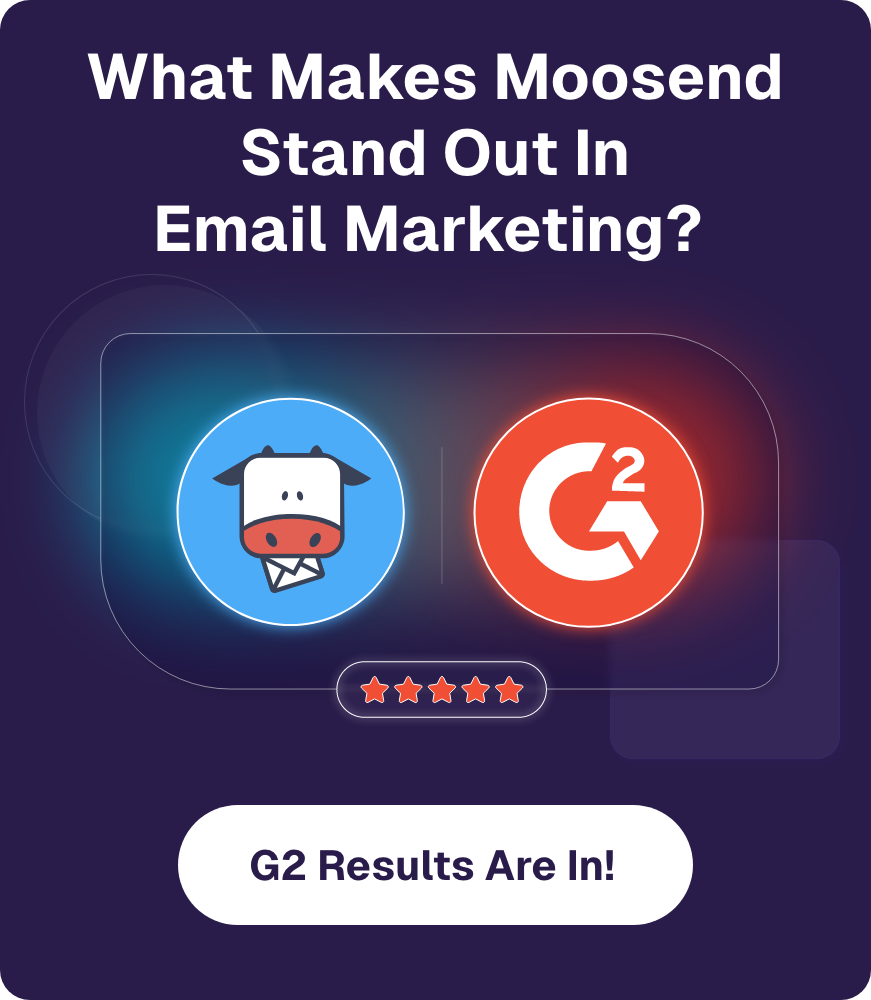


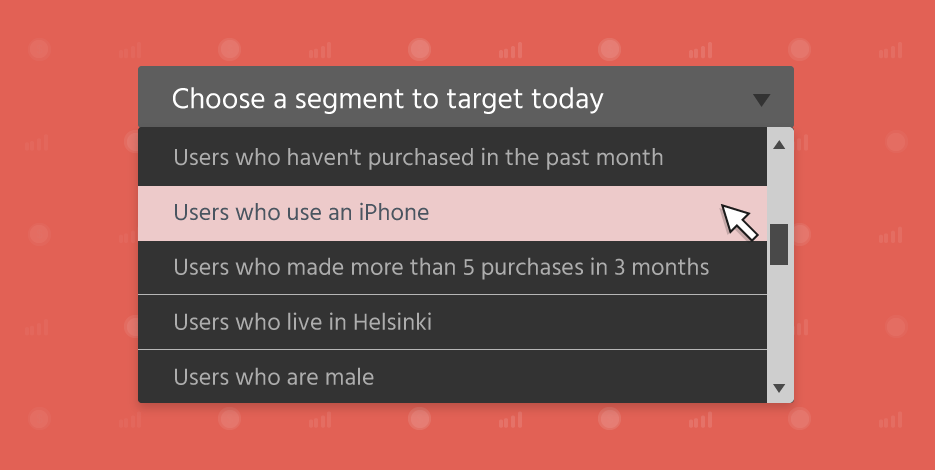
 Published by
Published by
